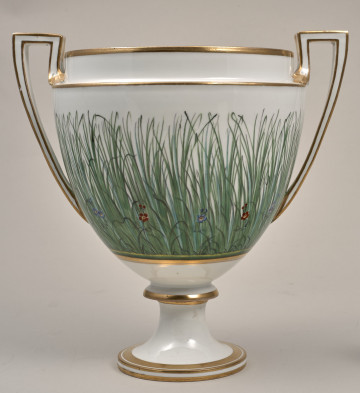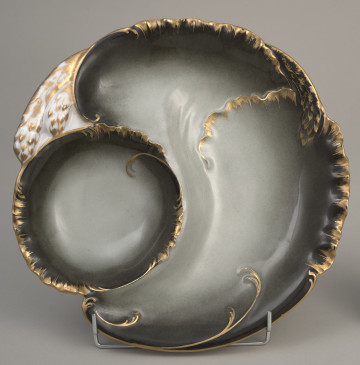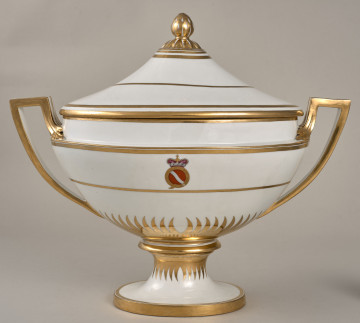
Service Vase
1801 — 1803
Castle Museum in Łańcut
Part of the collection: ceramics
The vase was made in the porcelain manufactory in Vienna. The factory was founded in 1718 as the second, after Meissen, porcelain manufactory in Europe and operated until 1864. The Łańcut vase was made in 1791 (dating according to the annual stamp), at the time when Konrad Sörgel von Sorgenthal (1784 - 1805) headed the Vienna manufactory. It was the heyday of the factory, which ushered in the age of classicism in Viennese porcelain. The forms of the products, especially their decoration, referred to antiquity, and the Łańcut vase is its example. It has the shape of an amphora. It is painted following the pattern of ancient Greek ceramic vases in a black-figure style. The dark brown and white decoration is painted on a terracotta background. The front is decorated with a medallion with the figure of a woman dressed in an antique robe, standing under a weeping willow, gazing thoughtfully at the vase standing on a pedestal. A broken anchor (symbolising the loss of hope) lies at the woman's feet. The scene is sentimental and is completed by the inscription on the neck of the vase: Mon sort est triste. The back of the vase is decorated with a floral vase with palmette motifs painted white and brown. The handles are painted dark brown, as are the rims on the neck and foot.
Author / creator
Dimensions
height: 26 cm, width: 12.5 cm
Object type
Ceramics
Technique
underglaze paints
Material
porcelain
Origin / acquisition method
administrative decision
Creation time / dating
Creation / finding place
Owner
Castle Museum in Łańcut
Identification number
Location / status

1801 — 1803
Castle Museum in Łańcut

20th century
Castle Museum in Łańcut

19th (?) century
Castle Museum in Łańcut
DISCOVER this TOPIC
Museum of King Jan III's Palace at Wilanów
DISCOVER this PATH
Educational path